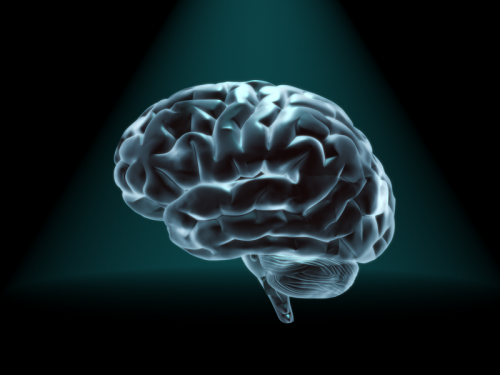Scientists find brain plasticity assorted into functional networks

The brain still has a lot to learn about itself. Scientists at the Virginia Tech Carilion Research Institute have made a key finding of the striking differences in how the brain's cells can change through experience.
Their results were published this week inPLOS ONE.
"Neurons can undergo long-term changes inresponseto experience such as learning, emotions, or other activity," said Michael Friedlander, executive director of the Virginia Tech Carilion Research Institute. Friedlander co-authored the paper with his former graduate student and postdoctoral fellow, Ignacio Saez. "Neuroscientists have focused much of their attention on understanding the neuroplasticity of the connections between nerve cells called synapses."
Synapses, the specialized connections betweenneurons, work by translating an electrical signal from one neuron into a chemical signal to modify the receiving neuron. The chemical signal triggers an electrical signal in the receiving neuron, and the process continues.
Synapses may become stronger or weaker by changing efficiency of the chemical communication process in response to repeated bouts of co-activation of the two interconnected neurons. This process, called synaptic plasticity, can cause changes that persist beyond the co-activation period for mere minutes through a lifetime.
Outside experience can be internalized as a physical reorganization of the brain's synaptic communication process. This is especially important during the brain's development but also throughout life as experiences such as learning continually modify the brain's synaptic circuitry.
"Until recently, scientists had thought that most synapses of a similar type and in a similar location in the brain behaved in a similar fashion with respect to how experience induces plasticity," Friedlander said. "In our work, however, we found dramatic differences in the plasticity response, even between neighboring synapses in response to identical activity experiences."
Friedlander and Saez reported that neurons whose excitatory synapses are in a certain states of plasticity, based on previous experiences, assort themselves into groups to converge onto specific individual neurons in the developing brain.
"Individual neurons whose synapses are most likely to strengthen in response to a certain experience are more likely to connect to certain partner neurons, while those whose synapses weaken in response to a similar experience are more likely to connect to other partner neurons," Friedlander said. "The neurons whose synapses do not change at all in response to that same experience are more likely to connect to yet other partner neurons, forming a more stable but non-plastic network."
The researchers observed this like-type synaptic plasticity buddy system in a rodent model, using an isolated part of the cerebral cortex responsible for processing vision. The scientists recorded electrical activity fromindividual neuronsafter activating groups of neighboring neurons. They then compared that recording to the electrical activity elicited in response to the activation of only a single neighboring neuron. The synapses were trained by repeating the activation process, to mimic learning.
When the scientists applied a pharmacological agent to the neurons that blocked synaptic inhibition, they saw that training elicited more dramatic and varied plasticity atexcitatory synapses. The plasticity responses of different groups ofsynapseson a given neuron were more similar when inhibition was blocked, which effectively grouped together like-type neurons by their learning responses.
“虽然我们已经知道多年simil的神经元ar types tend to richly interconnect, this is the first demonstration that such assortment processes apply tosynaptic plasticity," Friedlander said. "Such a result has implications for enhanced learning paradigms, as well as for better understanding the dynamic network properties of the large-scale neuronal networks in the living brain."
更多的信息:Ignacio Saez et al. Role of GABAA-Mediated Inhibition and Functional Assortment of Synapses onto Individual Layer 4 Neurons in Regulating Plasticity Expression in Visual Cortex,PLOS ONE(2016).DOI: 10.1371/journal.pone.0147642

















